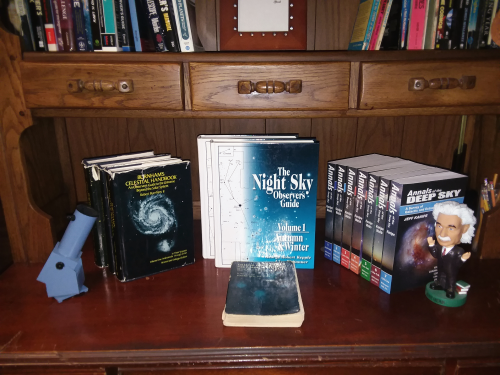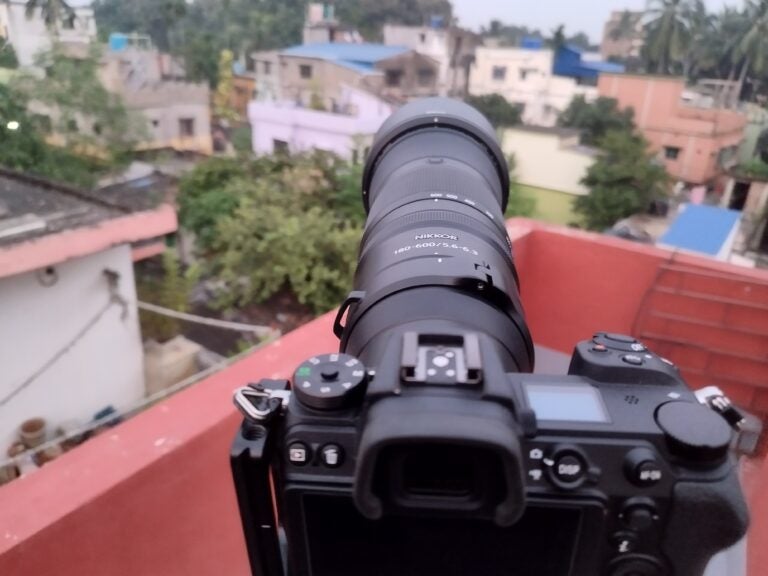I own dozens of guides, of course, but let me tell you about four of my favorites. The first, a reprint of the Rev. T.W. Webb’s Celestial Objects for Common Telescopes, Volume 2: The Stars (Dover Publications, 1962), served me well during my early years as a backyard astronomer in the 1970s. When Webb published the first edition in 1859, the default telescope was a 3-inch refractor and stellar objects like double stars and variables were the intended targets. Therefore, Celestial Objects for Common Telescopes lists only a handful of “clusters, nebulae, and groups,” as the true nature of galaxies was still unknown at the time. This wasn’t a problem for me, however, because my telescope back then was a 3-inch f/10 reflector and I was a double star fanatic.
Things changed in the early 1980s when I began setting my sights on Messier and NGC objects. I needed a resource with far wider horizons. In 1966, Lowell Observatory staff member Robert Burnham Jr. began expanding and updating Celestial Objects for Common Telescopes with a self-published series of loose-leaf guides. Twelve years later, Dover released them in the three-volume Burnham’s Celestial Handbook: An Observer’s Guide to the Universe Beyond the Solar System (Dover Publications, 1978). The expanded lists of stellar and deep-space objects were especially satisfying to the owners of 8-inch Schmidt-Cassegrain telescopes that were in vogue at the time.
As the 20th century drew to a close, I added George Kepple and Glen Sanner’s two-volume The Night Sky Observer’s Guide (Willmann-Bell Inc., 1998) to my library. Here was the ultimate constellation guide for instruments of all sizes, including the 13.1-inch Dobsonian-mounted reflector I then owned. Not only does it list more than 3,000 clusters, nebulae, and galaxies, but it also includes detailed finder charts and descriptions of celestial targets organized by instrument size, from 10×50 binoculars to 24-inch Dobsonians. Unlike Celestial Objects and Burnham’s, The Night Sky limited the amount of supplementary content. Still popular today, it remains a true “meat and potatoes” guide.
My fourth constellation guide is a work in progress. Annals of the Deep Sky, co-authored by Jeff Kanipe and Dennis Webb and published by Willmann-Bell Inc., brings backyard astronomy into the 21st century. Volume 1 (Andromeda, Antlia, Apus, and Aquarius) was released in 2015. As of this writing, seven volumes are available, with the most recent taking us through to the constellation Crux. While still serving the novice, Annals also addresses the needs of the modern-day amateur whose sophisticated equipment allows for serious scientific contributions. Rather than providing extensive lists of stellar and deep-sky objects like the previous three guides, Annals concentrates on some of the more noteworthy sights in each constellation. Like Burnham’s, Annals blends in plenty of astronomical knowledge, both historical and astrophysical. Because Annals is an ongoing and evolving project, the exact number of volumes and date of final issue have yet to be determined.
Which of these guides do I prefer? I love ’em all! That said, I must admit that my longtime friends Celestial Objects and Burnham’s are pretty outdated. Nevertheless, their lists of double stars include some not mentioned in either The Night Sky or Annals. So, if I had to limit my number of constellation guides, I’d go with The Night Sky and Annals. The former, with its extensive lists, and the latter, with its informative, up-to-date background material, complement each other perfectly.
Did I leave out any of your favorite astro guides? Let me know which ones and why they deserve mention. I’ll feature them in a future column.
Questions, comments, or suggestions? Email me at gchaple@hotmail.com. Next month: We’ll use a small scope to star-hop through the Coma galaxy cluster. Clear skies!










